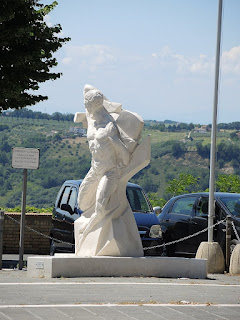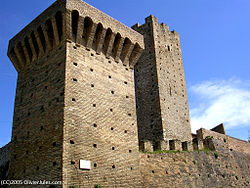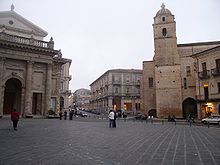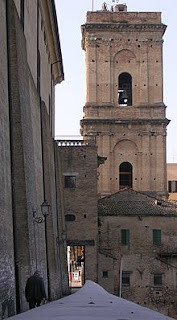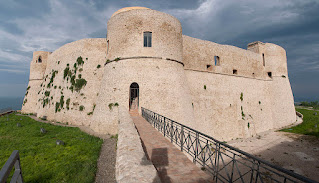Writer of Metamorphoses who was mysteriously exiled
.jpg) |
| The poet Ovid was noted for his imaginative interpretation of classical mythology |
The poet is mainly remembered for his work, Ars Amatoria (The Art of Love), which is essentially a manual on seduction written in verse, for the use of the man about town, and for his mythological epic poem, Metamorphoses.
His poetry was to have immense influence on later writers, because of its imaginative interpretation of classical mythology and its technical accomplishment.
Ovid essentially wrote his own life story in the autobiographical poem collection Tristia (Sorrows). His family was well to do and sent him and his brother to Rome to be educated. He studied rhetoric under the best teachers of his day and was considered to have a future as an orator, but he neglected his studies to spend more time on writing verses.
He was intended by his father for an official career but first spent time in Athens and travelled in Asia and Sicily. Afterwards, he held some minor judicial positions, but he decided that the life didn’t suit him and abandoned his posts to spend his time writing poetry and meeting other poets.
His first work, Amores (The Loves) was successful straight away and was followed by his Epistles of the Heroines, The Art of Beauty, The Art of Love and Remedies for Love. These works all reflected the sophisticated, pleasure-seeking society in which he circulated.
Ovid had three marriages himself. The first two were brief and ended in divorce, but Ovid always spoke of his third wife with affection and respect, and she remained faithful to him and represented his interests until his death.
_National_Gallery.jpg) |
| Eugène Delacroix's painting Ovid among the Scythians depicted the poet's life in exile |
In 8 AD, the Emperor Augustus banished him to Tomis, which was near modern day Constanta in Romania.
The reason for his exile is not fully known and was never explained clearly by Ovid himself. It has been suggested that it could have resulted from some of his poetry, or that he could have been an involuntary accomplice in the adultery of the emperor’s granddaughter, who was banished at about the same time.
It suggests that either his writing, or his behaviour, was perceived by Augustus to be damaging to his programme of moral reform and to the honour of the imperial family.
Ovid’s punishment did not involve the loss of his property, and so his wife remained in Rome to intercede for him and to protect his interests.
 |
| The second volume of a 1727 edition of Ovid's Metamorphoses, published in London |
Ovid is regarded as one of the greatest poets of all time and his popularity during his own lifetime has continued over the centuries since. In the 12th and 13th centuries, his poetry was being read in schools and performed by troubadours.
He became even more popular during the Renaissance and by the 15th century, printed editions of his work were being produced, and some knowledge of his work was taken for granted in an educated man.
Over the centuries, poets and artists have been indebted to him for their own inspiration. Metamorphoses - a collection of Greek and Roman myths about transformations - remains one of the most important sources of classical mythology to this date. Shakespeare, Goethe, and Ezra Pound have all followed in his footsteps with their own poetry.
 |
| Sulmona's historic centre; the arches in the foreground carried a Roman aqueduct |
Sulmona, where Ovid was born, is a town and comune - municipality - in the province of L’Aquila in Abruzzo, about 66km (41 miles) southeast of the city of the same name and just under 150km (93 miles) east of Rome. There is a bronze statue of Ovid in Sulmona’s Piazza XX Settembre, and the city's main thoroughfare, which connects the cathedral and the major piazzas and is lined by elegant covered arcades, shops, cafes, palaces, and churches, is named Corso Ovidio after him. The town’s biggest square, Piazza Garibaldi, hosts a palio-style festival and horse race known as the Giostra Cavalleresca every summer. Sulmona, which is renowned as one of the prettiest towns in the region, is the home of the Italian confection known as confetti. These are the colourful, sugar-coated almonds, which are given to guests at weddings and other celebrations in Italy. Sulmona is situated in a part of Italy of outstanding natural beauty, on the Valle Peligna plain, adjacent to the Maiella National Park.
 |
| Historic trabucchi platforms are still used by the fishermen of the Abruzzo coast |
Abruzzo is a region of southern Italy with a coastline along the Adriatic Sea. It borders the regions of Marche, Lazio and Molise and has some of the highest mountain peaks in the Apennines, such as the Gran Sasso d’Italia and the Maiella. Almost half of Abruzzo’s territory is protected through national parks and nature reserves. This is to ensure the survival of some of its rare species, such as the golden eagle, the Abruzzo chamois and the Marsican brown bear. The region has also become famous for producing wines such as Montepulciano d’Abruzzo, Trebbiano d’Abruzzo, Pecorino and Chardonnay. Although renowned for its mountainous interior, the region also boasts 133km (82 miles) of coastline, stretching north and south of the resort city of Pescara, the birthplace of writer, patriot and politician Gabriele D’Annunzio. Beautiful sandy beaches characterise the northern part of the coastline, while the rockier southern stretch is notable for the sight of trabucchi or trabocchi, the ancient fishing machines on stilts that jut out over the water, built almost entirely of logs, planks and beams, that D’Annunzio himself described as resembling "the colossal skeleton of a prehistoric amphibian".
Also on this day:
1898: The birth of jeweller Fulco di Verdura
1934: The birth of football coach Azeglio Vicini
1940: The birth of entrepreneur racing driver Giampiero Moretti
